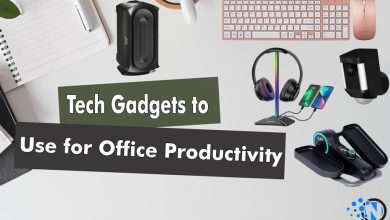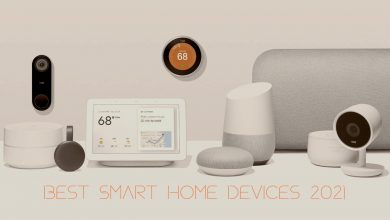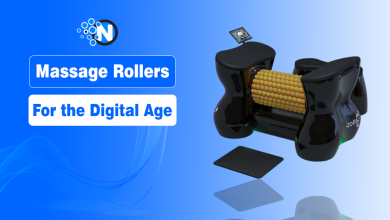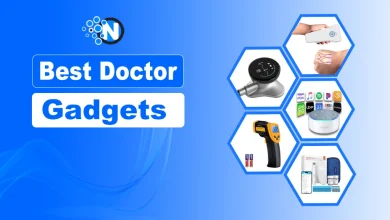Garmin vs Fitbit Smart Watches: Which Offers Better Fitness Trackers?
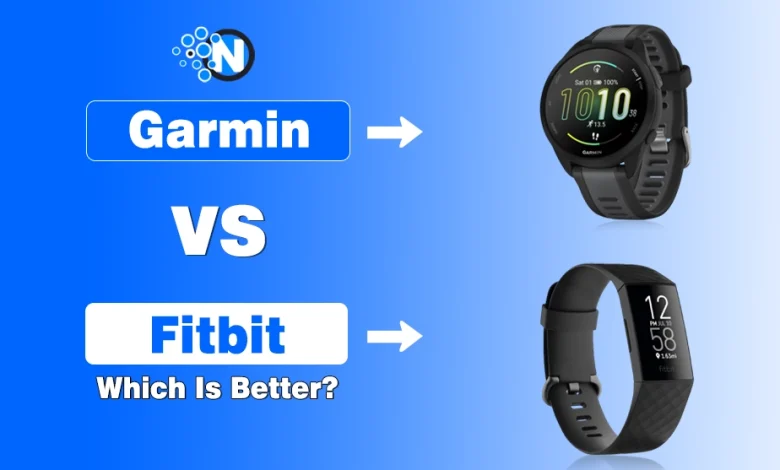
Every fitness journey starts with a simple goal to understand your body better. Garmin and Fitbit remain two of the most respected brands for fitness gadgets in 2025.
Garmin offers models like Epix Pro Gen 2, MARQ 2 (luxury), and rugged adventure watches like Instinct 2X Solar, while Fitbit’s Luxe 2 and Inspire 3 bands serve fashion and entry-level buyers.
But beyond looks and brand loyalty, which one actually delivers the most accurate and dependable fitness tracking experience? Therefore, this article focuses on the flagship and mainstream models most relevant for fitness and wellness tracking in 2025.
Garmin vs Fitbit: General Comparison
1. Brand Focus and Philosophy
| Aspect | Garmin | Fitbit |
| Core Identity | Sports performance, endurance, and outdoor navigation | Health, wellness, and simplicity |
| Primary Users | Athletes, adventurers, data-focused users | Everyday users and health-conscious individuals |
| System Integration | Works with Garmin Connect, Strava, TrainingPeaks | Deeply tied to Google Health and Fitbit app |
Garmin is intended to provide high-performance tracking and precision metrics, while Fitbit focuses on approachable wellness tracking with the latest wearable technology.
2. Design and Build Quality
Garmin
- Forerunner 970: Premium running/triathlon watch with high-end materials, advanced metrics.
- Fenix 8 Pro: Top-tier outdoor multisport watch offers LTE/ satellite connectivity and MicroLED display option.
- Instinct 3: Rugged outdoor option with updated display and design.
Fitbit
- Charge 6: Fitness band from Fitbit, still current in 2025.
- Versa 4: Major smartwatch release by Fitbit.
Design/Build Comparison:
- With the 2025 Fenix 8 Pro and Instinct 3, Garmin also introduces design upgrades (brighter displays, new form factors) to stay ahead.
- Garmin models use rugged materials (stainless steel, titanium, fiber-reinforced polymer), physical buttons + touchscreen, and high water resistance.
- Fitbit models emphasize lightweight aluminum or composite builds, full touchscreen, stylish everyday appeal, and moderate water resistance.
3. Sensors and Tracking Technology
Both brands provide strong sensor arrays, but Garmin’s precision remains superior for performance and endurance tracking.
Garmin Sensors
- Multi-frequency GNSS (GPS, GLONASS, Galileo, BeiDou)
- Barometric altimeter, gyroscope, compass, thermometer
- Advanced Elevation and VO₂ Max tracking
- Pulse Oximeter (SpO₂), HR sensor, and skin temperature monitoring
Fitbit Sensors
- Optical heart rate sensor
- ECG and SpO₂ sensors
- EDA (electrodermal activity) for stress tracking
- Skin temperature and HRV sensors
- Accelerometer, gyroscope, and connected GPS
Note: Both Garmin and Fitbit provide VO₂ Max estimates; Garmin’s are more detailed and athlete-accurate, while Fitbit’s simplified version is presented as a “Cardio Fitness Score.
| Metric | Garmin (Latest) | Fitbit (Latest) |
|---|---|---|
| Heart Rate Accuracy | High for both rest & intense workouts | Reliable at rest; less optimized for high-intensity training |
| GPS / GNSS | Multi-band GNSS in top models (e.g., 970) | Strong in wellness, stress, and sleep tracking |
| Performance Metrics | Running economy, lactic threshold, cadence, etc | Basic fitness tracking, less advanced for athletes |
| Wellness/Stress Tracking | Solid, but focus on performance | Strong in wellness, stress, sleep tracking |
| VO₂ Max / Fitness Score | Detailed and performance-oriented estimates | Simplified cardio fitness scoring |
4. Health, Fitness, and Activity Tracking
Both brands track a wide range of activities, but their focus differs.
Garmin Highlights
- Training Readiness & Recovery Score
- Advanced Running Metrics (cadence, stride, lactate threshold)
- 40+ Sports Profiles (triathlon, swimming, golf, skiing, etc.)
- Incident Detection and LiveTrack safety features
- Offline topographic maps and route navigation (in higher-end models)
Fitbit Highlights
- Daily Readiness Score (requires Fitbit Premium)
- Comprehensive stress and mindfulness tracking (EDA + HRV)
- ECG, SpO₂, and sleep stage insights
- Menstrual health tracking
- Activity reminders and guided workouts
5. Battery Life and Charging
Garmin’s watches are renowned for endurance, while Fitbit offers a decent but shorter lifespan.
| Model | Battery Life (Smartwatch Mode) | GPS Active Mode | Charging Time |
| Garmin Fenix 7 Pro Solar | Up to 14 days (22 days in battery-saver mode) | 40–60 hours | ~2 hours |
| Garmin Forerunner 965 | Up to 15 days | 42 hours | ~1.5 hours |
| Fitbit Sense 2 | Up to 6 days | ~12 hours | ~2 hours |
| Fitbit Charge 6 | Up to 7 days | ~10 hours | ~2 hours |
6. Smart Features and Music Capabilities
In 2025, Fitbit’s smartwatch features will have been significantly streamlined under Google’s ecosystem.
- Garmin Fenix 8 Pro introduces LTE & satellite messaging (InReach) on select models.
- Fitbit’s latest models (Charge 6, Versa 4) have had some smart features trimmed in 2025, e.g., onboard music streaming/storage is limited, voice assistant capability tied to phone, and some third-party integrations reduced.
- Garmin still offers full sport/fitness features, offline maps (in certain models), and music storage on certain “Music” editions.
- Fitbit: Many wellness features behind subscription, and full smart ecosystem actions are less prominent compared with earlier years.
| Feature | Garmin | Fitbit |
| Mobile Payments | Garmin Pay | Google Wallet |
| Music Storage | Available on select models only | No onboard music support |
| Voice Assistant | None | Requires phone, limited |
| Offline Maps | Yes (select models) | No |
| Smart Notifications | Yes | Yes |
7. App Ecosystem and Feature Access
- Garmin Connect: Free, robust, and data-rich. Offers deep workout analytics, training programs, and seamless syncing with Strava or TrainingPeaks.
- Fitbit App: Clean and user-friendly, but as of 2025, many advanced features (like Readiness Score, detailed sleep, mindfulness, and guided workouts) are locked behind Fitbit Premium. Google has also reduced third-party integrations, shifting to a more closed ecosystem centered on Google Fit/Health.
8. Price and Availability
| Model | Brand | Year | Price Estimate (Late 2025) | Comments |
|---|---|---|---|---|
| Fenix 8 Pro | Garmin | 2025 | $1,199-$2,000+ | Spot on (MicroLED top, standard AMOLED mid) |
| Forerunner 970 | Garmin | 2025 | ~$749 | Premium tier for performance runners |
| Instinct 3 | Garmin | 2025 | $399-$499 | Rugged entry to mid-range, as expected |
| Charge 6 | Fitbit | 2023 | $109-$179 (retail/sale ranges) | MSRP $149-$179, usually discounted |
| Versa 4 | Fitbit | 2022 | $134-$160 (late 2025) | Affordable, not a new 2025 launch |
<strong>Which One Should You Choose: Garmin or Fitbit</strong>
| User Type | Best Choice | Why |
| Professional Athletes | Garmin | Detailed performance metrics, precise GPS, long battery |
| Outdoor Enthusiasts | Garmin | Rugged build, offline maps, solar options |
| Casual Fitness Users | Fitbit | Simplicity, comfort, and wellness focus |
| Health & Stress Management | Fitbit | EDA, ECG, mindfulness, Premium wellness data |
| Budget-Conscious Shoppers | Fitbit Charge 6 | Affordable and reliable |
| Tech-Oriented Athletes | Garmin Venu 3 or Forerunner 965 | Smart features with performance focus |
<strong>Final Verdict – Garmin vs Fitbit in 2025</strong>
In 2025, Garmin is the performance leader, with unprecedented tracking accuracy, endurance, and independence for serious users and outdoor athletes.
Although Fitbit has been diluted in terms of smartwatch features, it has remained one of the best health and wellness ecosystems for users who have a preference for simplicity, comfort, and daily motivation.
- Choose Garmin for precision, durability, and data depth.
- Choose Fitbit for accessible wellness tracking and seamless Google integration.
Both brands deliver reliability, but your fitness goals determine the right choice.
<strong>People Also Ask</strong>
Which Garmin model is best for beginners in 2025?
The Garmin Instinct 3 is an excellent entry-level choice. It’s durable, accurate, and much more affordable than Fenix or Forerunner models while still offering strong fitness tracking.
Are Fitbit devices still supported after the Google transition?
Yes. Fitbit is now fully integrated into Google’s ecosystem. The Fitbit app continues to work, but many features now connect with Google Health instead of legacy Fitbit services.
Do Garmin watches work with iPhones and Android phones?
Absolutely. Garmin devices support both platforms via the Garmin Connect app, with similar functionality on both.
Can you use Fitbit without Fitbit Premium?
Yes, you can still track steps, sleep, workouts, and heart rate for free. However, advanced metrics like Readiness Score, detailed sleep insights, and mindfulness content require a Premium subscription.
Can Fitbit or Garmin watches make calls or send texts?
Neither brand offers full smartphone-free calling like the Apple Watch. Garmin LTE models can send emergency or preset messages; Fitbit requires a phone connection for notifications only.
How long do Garmin and Fitbit watches last before needing replacement?
Garmin watches often last 5-7 years or more due to their rugged build and software updates. Fitbit devices tend to last 3-4 years on average before battery or sensor performance starts to decline.

